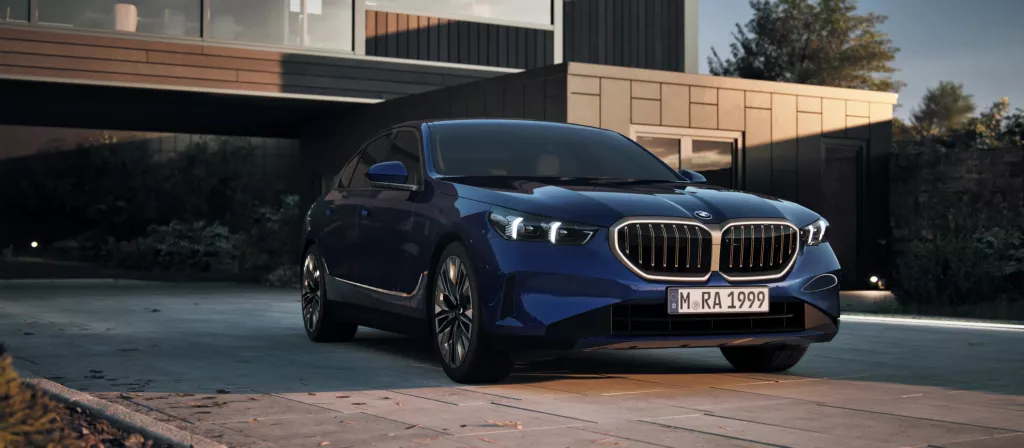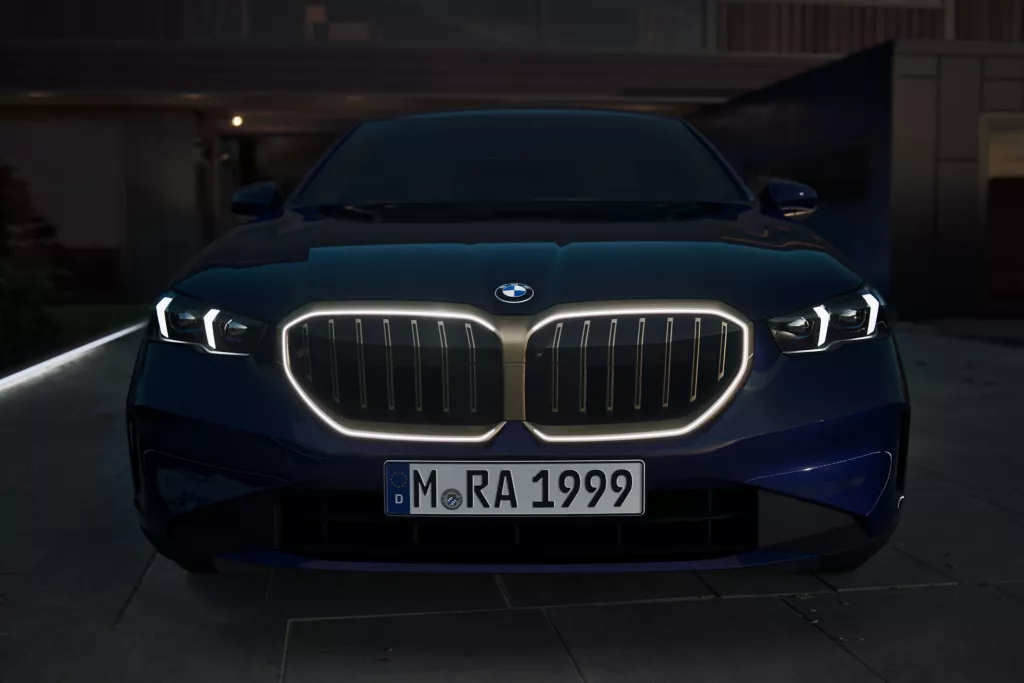BMW 520d [1]: Fuel consumption, combined WLTP in l/100 km: 5.6–5.1; CO2 emissions, combined WLTP in g/km: 147–133
The stated values are based on the mandatory WLTP measurement procedure. The real life values depend on various factors, e.g. cargo weight, driving style, route, weather conditions, auxiliary electrical consumption (including air conditioning), tires, battery state of health.
[1] Preliminary values
DRIVING PLEASURE.
The BMW 5 Series is the epitome of dynamic and sporty driving characteristics. A business sedan that offers elegance from the outside and luxury on the inside.
Equipped with state-of-the-art technology for more safety and comfort, a pioneer of its class from the outset and represents the pinnacle of business sedans throughout the world.
VARIANTS
-
Models
-
Fully electric
-
Diesel
-
-
M Models

|
520d Sedan
|
|
|---|---|
|
Maximun HP |
0 kW |
|
0-100 km/h |
7.3 s |
|
Top speed |
233 km/h |
|
Total range (up to) |
up to 582 km |
BMW 520d [1]: Fuel consumption, combined WLTP in l/100 km: 5.6–5.1; CO2 emissions, combined WLTP in g/km: 147–133
[1] Preliminary values
Temporary boost <10 seconds compared to nominal value. Composed of combustion engine drive (specified nominal value) and electric drive (up to specified nominal value).
The stated values are based on the mandatory WLTP measurement procedure. The real life values depend on various factors, e.g. cargo weight, driving style, route, weather conditions, auxiliary electrical consumption (including air conditioning), tires, battery state of health.
DRIVING DYNAMICS
DRIVING IN THE BMW 5 SERIES.
Comfortable, sporty and flexible: The BMW 5 Series is the perfect companion on long journeys, too. Video shows non-actual values.
Design
EXTERIOR HIGHLIGHTS.
INTERIOR DESIGN.
INTERIOR HIGHLIGHTS.
Technologies
ASSISTANCE SYSTEMS & CONNECTIVITY.
PRICE LIST OF THE NEW 5 SERIES SEDAN
Download a price list.

Would you like a personal consultation?
If you have any questions, require further information or would like specific offers for your dream BMW, we would be happy to assist. Our proficient BMW consultants will be pleased to give you individual advice by telephone or directly on site.














